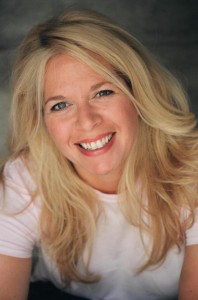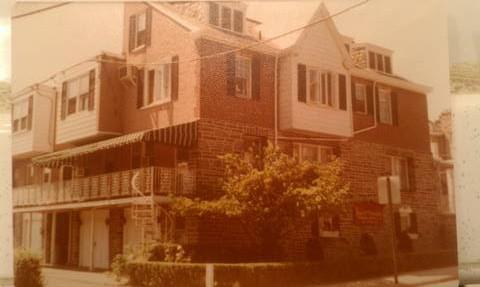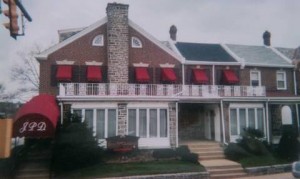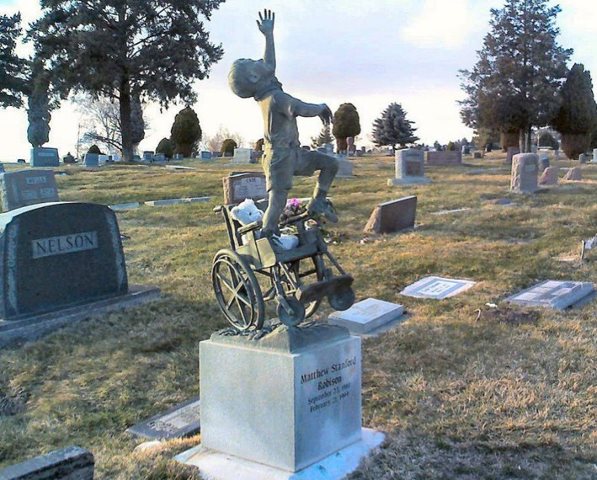Death
Clerical, White and Blue Collar
The funeral industry as we know it now in America allows for some of the greatest examples of both human graces and disgraces. The disgraces are all too publicized, and rightfully so. Most of us may remember the 334 bodies found in the back yard of the Tri-State Crematory in Georgia. Instead of fixing their retort, the crematory simply placed the bodies in the back yard to decompose and in place of the actual cremated remains, they gave the families boxes filled with wood chips, cement powder and wood ashes.
Many of us have seen the Nightline reports where funeral directors were caught bypassing laws on a regular basis, trying to scam money off of the elderly and acting more like greedy salesmen than compassionate professionals. Unfortunately, there are many funeral directors who are all too willing to use disadvantaged people to their own advantage. It’s ugly. It’s exploitation at its most base level. Yet, it happens. The unfortunate result of mixing grief clouded minds and greed poisoned hearts.
But, there are those of us who work hard, with undying honesty and integrity, sweating yellow tinged stains on our white collars. We withstand the sweat rolling down our backs into our cracks on the hot summer days as we stand in the caustic sun at the graveside. My great grandfather used to mow the funeral home yard in his shirt and tie. We’re probably still the only practitioners who ask for winter suits … they only make the medium grade suits today because white collar workers just aren’t out in the cold. Our backs are one of the main occupational hazards in this industry. And we get dirty too … crimson red on a bright white cotton shirt. Our collars may be white but our hearts are bleeding blue.
There are those funeral directors who see their profession as a calling; who find a sacredness to their calling, as though there was something spiritual about their work. As though they are more so ministers than death merchants. They are understanding, compassionate, hard-working, service oriented people who are more concerned about the richness of life in death then the wealth of their bank accounts. There are those who give their services for free to the less fortunate and downtrodden. Those of us who push families to buy caskets under their financial means instead of over. There are those of us who go above and beyond our contract expectations; who spend that extra five hours making the car accident victim viewable so that the family can see him one more time. There are those of us who offer more than just pre-need and at-need services … those of us who are there for the family months after the fact. There are those of us who understand that our integrity and honest direction can make Death a lot less hard for a whole lot of people.
The ancient and famed Egyptian embalmers understood that to be good death practitioners you also had to have religious and moral over and under tones in your life. And although we don’t divine like Egyptians, there are those of us who view this profession first as a practice of spirituality and secondly as a business; and, who do both with a strong work ethic. That’s the mold that I’m trying to fit into. A blue, white and clerical collar.
When Grief Kills Your Faith: Some Practical Advice
(Some days I play the role of advice mallard. So, hang with me as I dish.)
I want to give you permission to pursue your doubts about your faith.
In some faith communities and religious families, the doubters are ostracized. Doubting isn’t just seen as questioning; it’s viewed as something that’s underpinned by rebellion, by sin. The prevailing idea is that, “You’re doubting the faith, so you can leave the faith; and by leaving the faith, you are leaving our family.”
To stave off being ostracized by family and friends, many doubters keep their questions about God to themselves. And, to a degree, it’s okay, except when that doubt is part of your grief.
Doubt and grief are directly correlated. Kenneth Doka suggests that “one of the most significant tasks in grief is to reconstruct faith or philosophical systems, now challenged by the loss” (Loss of the Assumptive World; 49). All forms of grief, normal, complicated and especially traumatic grief produce doubts about one’s faith.
Goodness is sucked away in grief; and many of us base our faith off the presumed goodness of God. When that goodness is sucked into the darkness of grief, the foundation of God’s goodness begins to shake; our faith trembles and sometimes it shatters.
Faithquake.
The dilemma that results is this: we need our family and friends during grief … to share our grief with, to remember and to receive acceptance; yet, we’re afraid we will be ostracized by our family and friends if we express our doubt. Do we: 1. Pursue our grief induced doubts at the expense of our community and at the expense of experiencing the grief within the community; or, 2. Do we pursue our community at the expense of our personal faith searching?
We do both. You need both. You need to accept your doubts and find acceptance in community. And it might be nearly impossibility.
If you are experiencing doubt in a faith community during your grief, tell someone you trust something like this:
“I need to talk and I need you to just hear me and accept me right now. I know your faith is strong and I respect you for your faith, but my faith has taken a hit since ____’s death. Instead of forcing my faith, I’m processing my doubt. _____’s death is changing me.”
If they can listen, you need to talk it through with them. It’s healthy to express your grief within the community of grievers; and if your grief includes doubt, sharing will only help diminish your pain and clarify your outlook.
On the other hand, I want to give you permission to pursue the faith you’ve never had.
Grief can also enliven a newfound belief in God. All of a sudden your darkness sees a light and now – in your community of “unbelievers” – you’re the religious nut.
And you need to say the same thing to your community:
“I need to talk and I need you to just hear me and accept me. I know we aren’t very religious and I respect you and how you live life. But, I’m pursing faith since _____‘s death. I don’t want to convert you, but I want you to know I’m changing.”
The grief that can produce doubt can also enliven faith. And both are okay. And both need to be done in our communities.
Accept your grief. Accept your enlivened faith. And, to the best you can, do so in your community.
Lift & Roll
Today’s guest post comes from Celeste Donohue. Celeste is a writer/comedian who lives in Los Angeles and is also the daughter of a 3rd generation funeral director. Her blog “Death To Hollywood” is about her life growing up in a funeral home and her current life in Hollywood.
****
The way we brought the bodies in to the morgue was through the alley (SEE PHOTO to the right). There were big white doors (with brass door knobs of course) that would open wide enough to bring the stretcher in. For everyone else on our street, it was their garage. So technically, the morgue was in the garage that was connected to the basement. After the person was embalmed and dressed, we had a motorized lift to take the dead people up from the basement to the first floor. My dad told me that before it was a lift, it was an electronic chair for my grandfather to go upstairs after he had a stroke. Once my dad built the morgue in the basement he took the chair off and replaced it with a piece of wood that he could lay the bodies on.
That lift was fun. When I was really little my dad would let me ride it. I’d sit on it and he would turn the switch on and I’d start to go up the stairs. There was a light bulb on the other side of the steps that I used to pretend was the moon and I was an astronaut on my way up to the moon. Normal kid stuff, if you consider riding a lift for dead bodies normal.
That lift was later replaced with another one that was much more elaborate and cool. The new one actually came up through the floor of the parlor so that the body would already be in the casket and ready for their big day. The other lift couldn’t have held a casket, just a body. Once everything was in place; flowers, etc. no one would know that the lift was underneath the casket.
One time the body came up through the floor, was in the casket and everything seemed fine until the leg of the stand underneath the casket collapsed. We were upstairs watching TV when we heard a loud thud followed by my dad yelling a string a curse words. That may have been one of the few times I heard him say “fuck,” except he yelled it. The leg collapsed, the casket fell and the body rolled out. Luckily this didn’t happen during a funeral, it happened while he was setting up, but the family was due there soon so my dad was freaking out. Naturally, we ran downstairs and the dead lady was in the middle of the floor.
Dead bodies aren’t really fit for moving around once they’re in the casket because they’re so stiff. The body was facing down and when my dad rolled her over, her hands were still folded. Can you picture that? It was funny because people who are alive are just the opposite. My dad wasn’t able to laugh about that one right away, but we did.
Of course, my dad and brother got her back into the casket and everything was fine after she had a slight touch up. The family never knew that their loved one had been face down in the middle of the floor in her fancy dress a couple hours before that. And that’s for the best because there really isn’t room for a lot of error when it comes to a funeral. People are so distraught they probably wouldn’t find it funny to watch a dead body roll out of a casket.
Why You May Never Heal
In Kubler-Ross’ model of grief process, she listed five stages of grief:
denial,
anger,
bargaining,
depression,
and acceptance.
In this process of grief, Kubler-Ross assumed that throughout the whole grief process, the bereaved should be experiencing what Freud called “decathexis”, which is a removal of emotional energy from the deceased; a detachment. Freud then suggested that during and after “decathexis” we will take those emotional energies and reinvest them into another object or person in a process called “recathexis.” Essentially, we find other people to love … and use them to fill the “love hole” left by the deceased.
The assumption to both Freud and Kubler-Ross’ model is that the end of the grief process (healing, acceptance) is a form of detachment from the deceased.
But, I think they’re wrong.
Anna Lamott writes,
“You will lose someone you can’t live without, and your heart will be badly broken, and the bad news is that you never completely get over the loss of your beloved. But this is also the good news. They live forever in your broken heart that doesn’t seal back up. And you come through. It’s like having a broken leg that never heals perfectly—that still hurts when the weather gets cold, but you learn to dance with the limp.”
Instead of saying that the end of the grief process is detachment and healing, I think we should say that the healthy end of the grief process is adjustment. It’s adjusting to the fact that your loved one is no longer here to share life experiences with you. It’s adjusting to the loss of the future, but there’s never a detachment from the past.
We simply have on-going bonds with the deceased. They will forever be apart of us and instead of trying to “heal” and find “decathexis” (although I don’t think Freud’s idea is categorically wrong), we must learn to adjust and dance with our limp.
Over time, you will learn to adjust to the death of a loved one. A part of you has been lost and you will never find it again, so you must learn to live without it. But, don’t confuse your adjustment for healing. You may never heal.
This from Jandy Nelson over the loss of her sister, Bailey:
“My sister will die over and over again for the rest of my life. Grief is forever. It doesn’t go away; it becomes a part of you, step for step, breath for breath. I will never stop grieving Bailey because I will never stop loving her. That’s just how it is. Grief and love are conjoined, you don’t get one without the other. All I can do is love her, and love the world, emulate her by living with daring and spirit and joy.”
Maybe the reason we never heal is because our love never dies.
More Info on “The Most Beautiful Gravestone I’ve Ever Seen”
Last Friday, I posted this photo on my Confessions of a Funeral Director Facebook Page.
Since I posted it, over 2,000,000 people have viewed it.
Many have asked, “Where is this gravestone located?” “Who is the gravestone for?” And various other questions.
Here’s Matthew Stanford Robison’s “Find a Grave” page that will answer most of your questions:
| Birth: | Sep. 23, 1988 |
| Death: | Feb. 21, 1999 |
This unique monument shows the young boy jumping upward, out of his wheelchair. Confined to the chair most of his young life, he is now free of earthly burdens. “And then it shall come to pass, that the spirits of those who are righteous are received into a state of happiness, which is called paradise, a state of rest, a state of peace, where they shall rest from all their troubles and from all care, and sorrow.” Peacefully in his sleep on Sunday, February 21, 1999, our cherished son, brother and friend, Matthew Stanford Robison was received into a state of happiness, and began his rest from troubles, care, and sorrow in the arms of his Savior and friend Jesus Christ. Matthew was a joy and inspiration to all who were privileged to know him. He was a testament to the supreme divinity of the soul and an embodiment of the completeness our spirits yearn for. The godliness of his soul inspired, influenced and blessed all who knew him. He came into this world as a miracle and left this world as a miracle. Born with severe earthly disabilities on September 23, 1988 in Salt Lake City to Johanna (Anneke) Dame Robison and Ernest Parker Robison. At birth, Matthew’s life expectancy was anticipated to be only hours long. However, fortitude, strength, and endurance, combined with the power of God allowed Matthew to live ten and one-half years enveloped in the love of his family and friends. His family was privileged to spend time with him here upon earth, to learn from his courage and marvel at his constant joy and happiness in the face of struggle. His family will be eternally changed by his presence and temporally changed by his passing. His presence inspired all those who knew him. He opened their hearts as well as their eyes. He is survived by his parents: Ernest and Anneke; sisters and brothers, Korrin, Marc, Jared, and Emily of Murray, Utah, and Elizabeth (Czech Prague Mission) Also, grandparents and other family members. A heartfelt thanks to his special care givers, especially Shauna Langford, and others at Liberty Elementary School. |
|
| Burial: Salt Lake City Cemetery Salt Lake City Salt Lake County Utah, USA |
|
Here is part of Matthew’s obituary:





